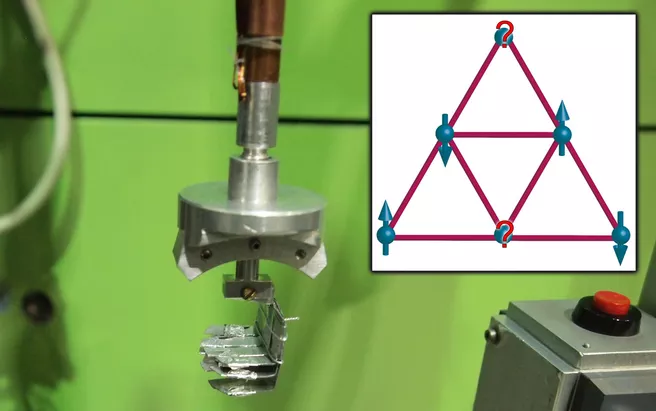In the past two years, evidence has accumulated indicating that compound YbMgGaO4 with a triangular-lattice structure is in fact the quantum spin liquid proposed by Anderson. To test whether this argument is correct, the researchers measured YbMgGaO4 and its sister compound YbZnGaO4 with neutrons combined with various other techniques. Results are similar for both compounds, and some resemble those of a quantum spin liquid.
For example, from inelastic neutron scattering, mainly performed on the cold three-axes spectrometer PANDA, operated by the Jülich Centre for Neutron Science at its outstation at the Heinz Maier-Leibnitz Zentrum, they observed the quasi-continuous excitation spectrum, which is considered to be the conclusive evidence for a spin-liquid state. In fact, by combining results from susceptibility, specific heat, and thermal conductivity measured at temperatures of around 0.05 Kelvin, close to absolute zero, as well as theoretical calculations, they found that the true ground state is indeed a spin-glass. The team showed that a spin glass mimics a quantum spin liquid in many ways, but is induced by the disordered arrangements of the atoms, instead of the quantum fluctuations needed for the latter.
Text: Angela Wenzik / JCNS
Original publication:
Zhen Ma, Jinghui Wang, Zhao-Yang Dong, Jun Zhang, Shichao Li, Shu-Han Zheng, Yunjie Yu, Wei Wang, Liqiang Che, Kejing Ran, Song Bao, Zhengwei Cai, P. Čermák, A. Schneidewind, S. Yano, J. S. Gardner, Xin Lu, Shun-Li Yu, Jun-Ming Liu, Shiyan Li, Jian-Xin Li, and Jinsheng Wen
Spin-Glass Ground State in a Triangular-Lattice Compound YbZnGaO4
Phys. Rev. Lett. 120, 087201 (2018), DOI: 10.1103/PhysRevLett.120.087201
